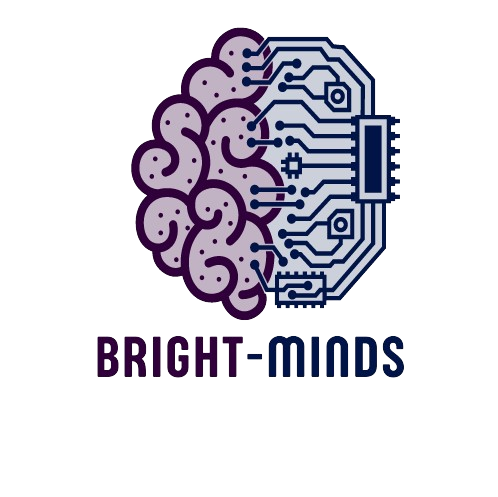Colors are all around us, from the bright blue sky to the vibrant green leaves, but have you ever wondered why things are different colors? Why is the grass green, the sky blue, and strawberries red? Let’s dive into the amazing world of colors and explore some fun facts about how they work!
What Are Colors?
Color is fundamentally the way our eyes interpret light. Different wavelengths make up light, and to our eyes, each wavelength represents a distinct color. An item absorbs certain wavelengths of light and reflects others when it strikes it. What we perceive as the object’s color is the reflected light.
A red apple, for instance, appears red because it absorbs other colors and reflects red light wavelengths. In a similar manner, a green leaf absorbs the other colors in the spectrum while reflecting green light.
The Science Behind Color
Colors come from light! White light, like sunlight, is actually a mix of all colors of the rainbow. When this light passes through a prism, it separates into a spectrum of colors, which you might recognize as the rainbow: red, orange, yellow, green, blue, indigo, and violet.
The Visible Spectrum:
- Red: The longest wavelength of visible light. It’s warm and intense, often associated with energy and passion.
- Orange: A mixture of red and yellow, and the color of sunsets and pumpkins!
- Yellow: Bright and cheerful, yellow is often linked with sunshine and happiness.
- Green: The color of nature, green represents balance, growth, and harmony.
- Blue: Cool and calming, blue is often associated with the sky and the ocean.
- Indigo and Violet: These colors are deep and mysterious, representing creativity and intuition.
Fun Facts About Colors
- Colors Can Affect Your Mood: Did you know that the color around you can change how you feel? For example, blue is often considered calming, while red can make you feel more energetic or even hungry! That’s why many restaurants use red in their decor—it’s said to make people feel more hungry.
- The Color of the Sky: The sky looks blue because of a phenomenon called “Rayleigh scattering.” The shorter blue wavelengths scatter more easily than the longer red wavelengths, so when sunlight enters Earth’s atmosphere, we see more blue light scattered across the sky.
- Why Grass is Green: Plants appear green because of chlorophyll, a special pigment that helps plants absorb sunlight for photosynthesis. Chlorophyll absorbs most colors of light but reflects green light, which is why leaves and grass look green.
- The Color of Strawberries: Strawberries are red because of a pigment called anthocyanin. This pigment not only gives strawberries their vibrant red color but also acts as an antioxidant, which is great for your health!
- Colors in Nature Are Everywhere: Animals use colors to communicate and survive. Bright colors on a frog or butterfly can warn predators that the animal is toxic. On the other hand, animals like chameleons change color to blend in with their environment, helping them stay safe.
- Colors Have Meaning: Throughout history, colors have been given special meanings. For example, in many cultures, white symbolizes purity and innocence, while black can represent mystery or even mourning. Colors are often used to convey emotions, celebrations, or important events.
How Do We See Colors?
Cones are unique cells found in our eyes that are sensitive to various light wavelengths. Three different kinds of cones are found in humans: one for red light, one for green light, and one for blue light. Together, these cones provide humans the ability to see a vast array of colors.
Certain hues can occasionally be invisible to the human eye. Color blindness is a disorder that affects a tiny number of people, particularly men. Certain colors, such as red and green, might be difficult for people with color blindness to recognize..
Mixing Colors: The Magic of Color Theory
Did you know that you can create new colors by mixing other colors? When it comes to art and painting, primary colors (red, blue, and yellow) are the building blocks of all other colors. Here’s a simple guide to how colors mix:
- Red + Blue = Purple
- Blue + Yellow = Green
- Red + Yellow = Orange
- Mixing all three primary colors makes brown or gray.
In the world of digital screens, colors mix in a different way. Instead of mixing paint, screens use light! Red, green, and blue light are mixed together to create millions of different colors on your phone, computer, or TV.
Fun Activities to Explore Colors
- Create Your Own Rainbow: Use a prism or a glass of water to split sunlight into a beautiful rainbow. Try capturing the rainbow with a camera or drawing the colors in a notebook.
- Color Scavenger Hunt: Look around your house or backyard and find as many different colors as you can. Make a list of the colors and match them with the things you see.
- Mix Your Own Paint: Try mixing primary colors with paints and see what new colors you can create. Experiment with making lighter or darker shades by adding white or black!
- Learn About Color Blindness: Try out special color-blindness simulators online to experience what it might be like for someone who has difficulty distinguishing certain colors.
Conclusion: The Magic of Colors
There are colors everywhere, and they contribute to the excitement and vibrancy of our environment. Color greatly influences our life, from the hues of a sunset to the things we wear. Exploring the world around you can be enjoyable if you understand how colors function and impact our surroundings and emotions. Take a moment to enjoy the beauty and science of color the next time you see it!
You may be like this:-
How to Teach Colors and Shapes to Preschool Kids
Methods for Assisting Your Preschooler with Early Math Concept Understanding

